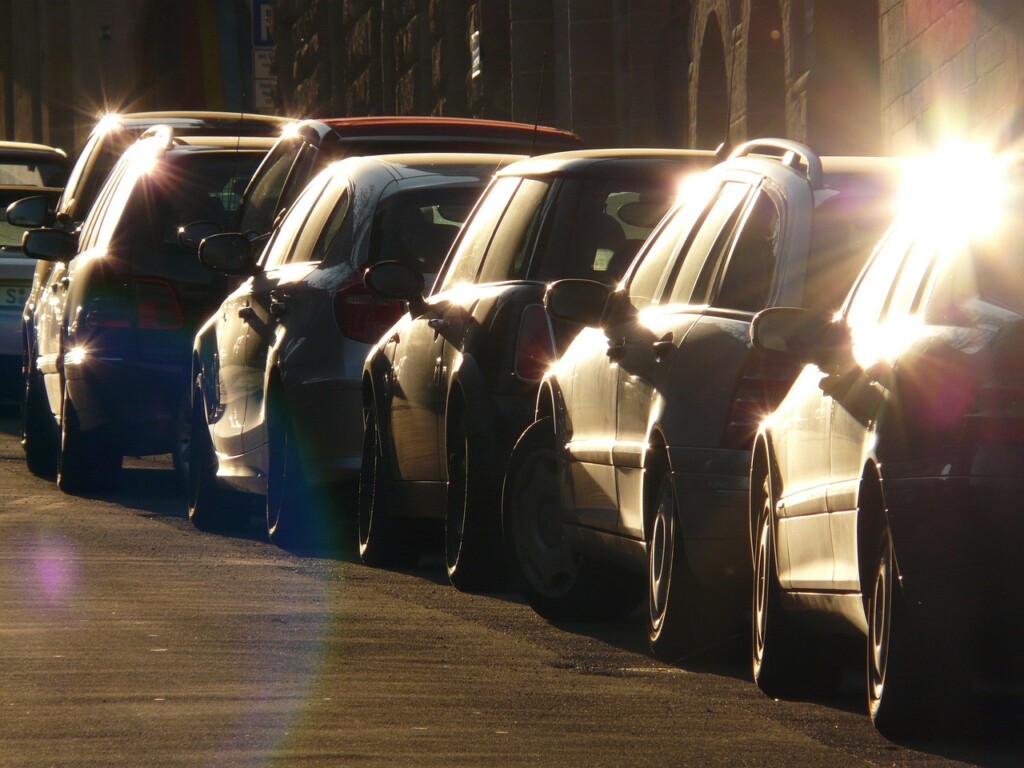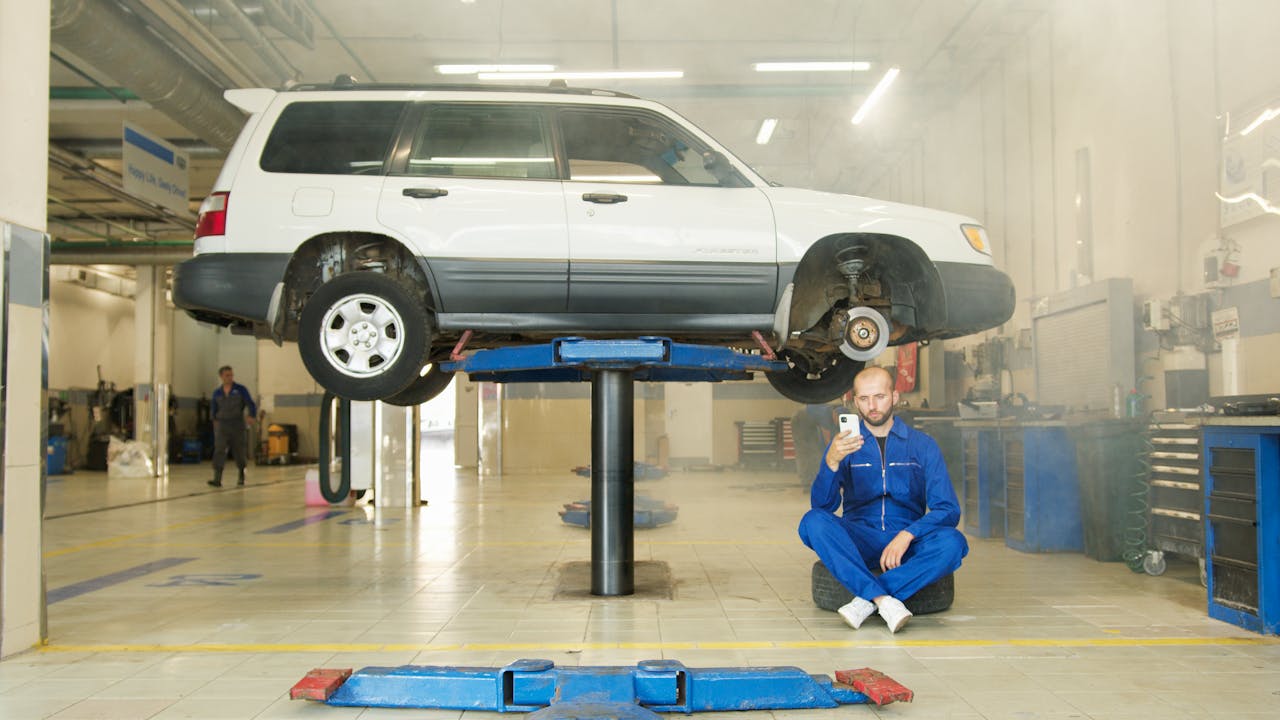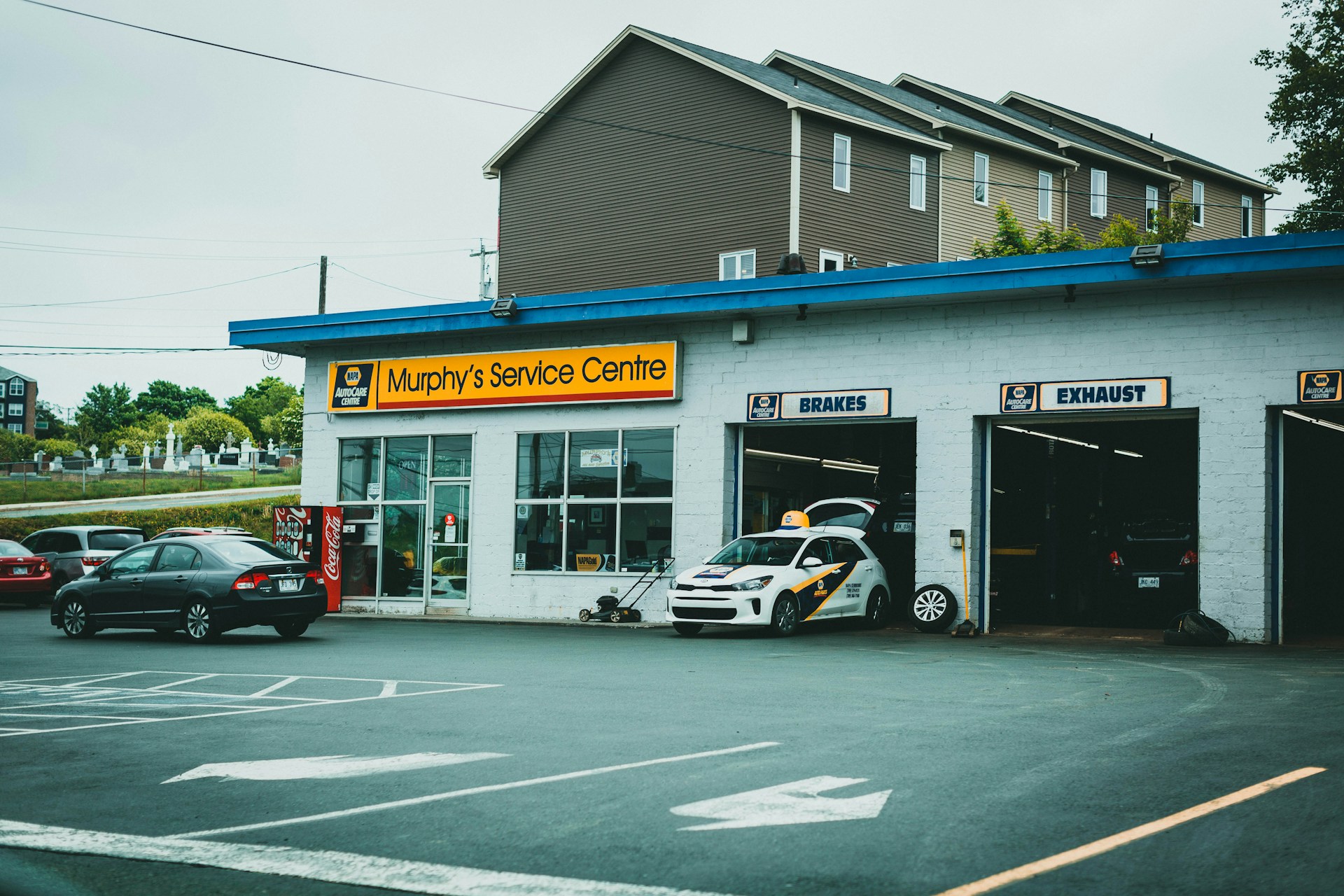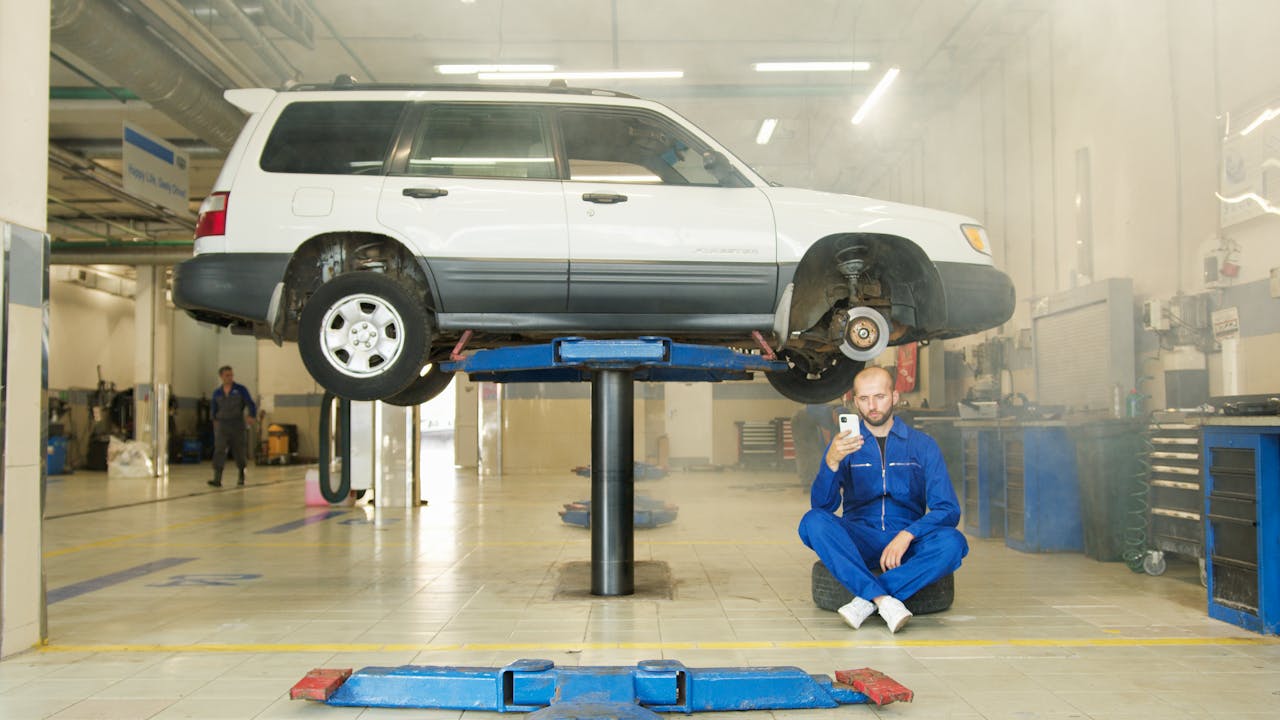Houston car wash development requires meticulous coordination between multiple regulatory agencies and technical requirements. While other Texas cities may have streamlined processes, Houston maintains distinct layers of oversight through its Planning and Development Department, Industrial Wastewater Service, and TCEQ compliance mandates.
We navigate these intersecting requirements daily, from initial submittal documentation through final permitting. The process demands precise site plan documentation, comprehensive parking and landscaping calculations, plus specialized wastewater management systems that address both municipal discharge standards and state environmental regulations.
What Documents And Forms Must Be Submitted For Site Plan Review?

The Houston Permitting Center requires six essential components for development site plan review. Each document serves a specific purpose in the review process and must meet exact specifications.
The recorded subdivision plat requirement demands two copies. We obtain these copies from Imaging Documents and Drawings on the second floor of the Houston Permitting Center at 1002 Washington Avenue. This plat establishes the legal boundaries and subdivision status of the property.
Survey documentation requires two copies, sealed and certified by a registered public surveyor. The survey must show all existing structures and tie to a street intersection. Houston does not require a recent survey, allowing older surveys that meet the technical standards.
Site plan submittal consists of two copies illustrating comprehensive site details. These plans must show all existing and proposed buildings, landscaping, screening fences, parking spaces, curb cuts, loading docks, and adjacent roadways. The level of detail directly impacts review efficiency and approval timeline.
Off-street parking documentation can take two forms. We attach the City’s parking form to the site plan or create an equivalent table directly on the plan. Both options must contain identical parking requirement data as specified in the official form.
Landscape documentation follows the same dual approach as parking requirements. The landscape form attaches to the site plan or appears as a table on the plan itself. Both formats must include the same information provided in the official landscape requirement form.
Application fees complete the submittal package. Current fee structures appear on the Planning and Development website and vary based on project scope and complexity. We verify fee amounts before submission to avoid processing delays.
What Must The Car Wash Site Plan Show And Dimension?
Car wash site plans require precise measurements and comprehensive documentation to meet Houston’s development standards. We approach each plan as a detailed roadmap that guides both city reviewers and construction teams through the project’s physical requirements.
Plans must be drawn to scale with a north arrow prominently displayed. Tie the site to the nearest cross street intersection and dimension this connection clearly. This reference point ensures accurate positioning within the city’s coordinate system and provides surveyors with reliable benchmarks for field verification.
Show right-of-way widths for all adjacent streets on the plan. These measurements determine setback requirements and help coordinate utility installations with public infrastructure. Building setback lines must be clearly marked and dimensioned from all property boundaries, ensuring compliance with zoning requirements and fire safety codes.
Parking areas require detailed dimensional information throughout the design. Label and dimension each parking stall’s width and depth, typically 9 feet by 18 feet for standard spaces. Show aisle widths between parking rows, generally 24 feet for two-way traffic or 18 feet for one-way circulation. Dimension all driveways, including their width, turning radii, and connections to public streets.
When off-site parking serves the car wash, show the pedestrian path connecting the parking area to the facility. Mark the walking distance along this clearly delineated route. Houston reviewers verify that off-site parking meets accessibility requirements and provides reasonable access for customers and employees.
Document all landscaping elements with specific detail. Show existing vegetation to be preserved and proposed plantings with type, size at installation, and mature dimensions. Include quantities for trees, shrubs, and ground cover areas. This information supports landscape compliance calculations and helps coordinate irrigation planning.
Building information requires comprehensive documentation on the site plan. Show all existing and proposed structures with dimensions tied to site boundaries. Include total square footage for each building, broken down by use type when applicable. These measurements support parking calculations, setback verification, and building permit coordination.
Identify the land use of all adjacent properties on the plan. This context helps reviewers assess compatibility and potential conflicts with neighboring developments. We typically research current zoning and actual uses to ensure accuracy in this documentation.
The survey component must encompass all contiguous property under one ownership or legal interest. This broader view ensures that the car wash development considers site constraints and opportunities across the entire controlled area. Property lines, easements, and existing improvements across the full ownership must be accurately shown.
Attach the City’s site plan requirement sheet directly to the submitted plans. This standardized checklist ensures that all required elements are addressed and provides reviewers with a clear verification tool during the approval process.
How Do Parking And Landscaping Standards Apply To Car Wash Sites?

Car wash sites must meet specific off-street parking calculations and landscaping formulas under Houston’s development standards. We coordinate these requirements through the City’s parking forms and detailed landscape calculations that demonstrate compliance with Chapter 26 Code of Ordinances. The parking documentation includes land use details, gross floor area measurements, and required space calculations, while landscaping involves precise tree and shrub formulas tied to property dimensions.
Off-Street Parking Documentation Requirements
We complete the City’s official parking form or include an equivalent data table directly on the site plan. The form requires proposed land use classification, previous land use history, and gross floor area measurements for the car wash facility. Required parking spaces must be calculated according to Chapter 26 standards, with clear documentation of both on-site and off-site parking counts.
When off-site parking serves the car wash, we provide the pedestrian walking distance from the off-site location to the main facility entrance. This distance must be shown on a clearly delineated pedestrian path that demonstrates safe, accessible routing for customers and employees. The parking analysis considers peak operational periods when multiple vehicles queue for washing services while additional spaces accommodate staff and waiting customers.
Street Tree Calculations And Spacing Requirements
Street tree requirements follow a specific formula: T equals the length of property line in feet divided by 30. We apply this calculation separately to each block face when the car wash property fronts multiple streets. Tree spacing must maintain a minimum of 20 feet on-center without extreme variation, accounting for driveways and site conditions that may affect placement.
Existing street trees in the abutting right-of-way may count toward the requirement, reducing the number of new trees needed. We verify that proposed street tree species appear on Houston’s approved Street Tree List and meet minimum size requirements of 1.5 inches caliper and 6 feet in height. Street trees are preferably planted within the public right-of-way, though the City allows placement within 10 feet of local streets or 25 feet of major thoroughfares.
Parking Lot Tree Requirements And Proximity Standards
Parking lot trees are required at a ratio of one tree per 10 new parking stalls created for the car wash facility. Each parking space must be located within 120 feet of either a parking lot tree or qualifying street tree. This proximity requirement ensures adequate shade coverage across the parking area during Houston’s intense summer months.
At least half of the required parking lot trees must be large species selected from Houston’s Parking Lot Tree List. We position these trees to avoid conflicts with car wash equipment, circulation patterns, and utility locations while meeting the 120-foot proximity standard. Tree wells and root zones require protection from vehicle damage and compaction during construction and operation.
Shrub Requirements And Perimeter Landscaping
Shrub calculations use the formula S equals street trees (T) multiplied by 10, establishing the minimum number required for new or expanded parking lots. At least 75% of required shrubs must be planted along the parking lot perimeter on private property, not within the public right-of-way. The remaining 25% can be distributed throughout the site or concentrated in interior landscape islands.
All shrubs must be selected from Houston’s approved Shrub List and meet the minimum height requirement of 18 inches at planting. We coordinate shrub placement to complement the car wash operation, avoiding areas where vehicle overspray, chemical exposure, or heavy foot traffic could damage the landscaping. Proper drainage and irrigation systems support shrub establishment and long-term survival.
Landscape Buffers For Residential Adjacency
Car wash sites adjacent to existing single-family residential properties must install screening buffers. We provide either a 6-foot-high opaque screening fence constructed of wood or concrete masonry units, or a 15-foot-wide evergreen planting strip. The fence option offers immediate screening but requires ongoing maintenance, while the evergreen strip provides natural screening that improves over time.
Evergreen screening strips use dense plantings of approved species that maintain year-round foliage. We space plants to achieve full screening within two growing seasons while allowing for mature plant size. The buffer design considers noise reduction, visual screening, and compatibility with car wash operations including equipment access and maintenance activities.
Tree Credit Options And Financial Alternatives
Tree planting equivalency credits reduce the number of trees required through several mechanisms. We can earn credits by planting trees with caliper measurements greater than the minimum 4-inch standard, preserving existing on-site trees that meet species and size requirements, or preserving right-of-way trees. Tree fund deposits of $500 per tree provide an alternative to planting up to established limits.
Combined tree credits are capped at 50% of the total tree requirement, ensuring that a minimum number of new trees are actually planted on the car wash site. We document all credit applications with supporting evidence such as tree surveys, species verification, and preservation plans. Credit calculations require review and approval by Houston Planning and Development Department before final site plan approval.
What Wastewater, Grit-Trap, And Environmental Rules Affect Design And Operations?
Industrial Wastewater Permits And Discharge Standards
Car washes in Houston generally do not need an Industrial Waste Permit, but we always contact the Industrial Wastewater Service at (832) 395-5800 to discuss operations and complete the Industrial Waste Survey as directed. The City enforces strict discharge limits for car wash wastewater, including a total oil and grease limit of 200 mg/L and no floating oil and grease allowed on the water surface.
The City prohibits several types of discharges that could affect our car wash design. These include wastewater with pH below 5.0 or above 11.0, sulfides exceeding 5 mg/L, liquids with temperatures above 113°F (45°C), flammable substances, solids that can obstruct sewer lines, and any noxious or toxic substances. We design our treatment systems to prevent these prohibited discharges from entering the municipal sewer system.
Special Waste Generator Requirements
Car washes are classified as special waste generators under City of Houston Code Section 47-512(b). We must ensure that interceptors are fully evacuated at least every 90 days unless we obtain an approved waiver through the Notice of Waiver application process. Before any pump-out service, we verify the trap is completely emptied, confirm the sample well is clean, and ensure the correct trap capacity is noted on the manifest.
The generator responsibilities include specific documentation requirements. We sign the generator portion of the manifest, retain our copy, and return the generator copy to the transporter within 15 days of pump-out. All generator and returned generator copies of waste manifests must be kept on site for five years.
Car washes operating as non-food establishments obtain permits at 7427 Park Place Boulevard, Houston, TX 77087, Monday through Friday from 7:30 a.m. to 3:30 p.m. These permits are valid for one year from the issue date and must be renewed annually.
TCEQ Grit Trap And Backflow Prevention Standards
TCEQ requirements mandate the installation of a reduced-pressure-principle backflow prevention assembly, which must be tested annually by a certified professional. We also install a catch basin or grit trap as required for permanent car wash facilities under the plumbing code.
Discharging car wash wastewater to a septic system is prohibited. When discharging to the municipal sewer system, we notify the local wastewater treatment plant and add clean-out access for sampling as required by the Industrial Wastewater Service.
Managing wet grit-trap waste requires compliance with specific TCEQ rules. We handle this waste by drying it on site using evaporation beds designed to prevent water or waste from escaping into surrounding areas or storm drains, drying it at another site we own within 50 miles, or hauling it for disposal using a TCEQ-registered sludge transporter. We maintain transporter trip tickets and manifests for at least three years.
Tank Registration And Air Emissions Compliance
If our car wash dispenses fuel, we register underground storage tanks (USTs) and aboveground storage tanks (ASTs) with TCEQ and meet all technical standards for tank installation and operation. Most car washes qualify as de minimis sources for air emissions, but facilities that include fueling operations, solvent use, or auto repair services may require a permit by rule.
Best management practices we implement include covering wash bays to reduce evaporation, reusing water where possible to minimize discharge volumes, and conducting regular leak checks on all equipment and storage systems. These practices help ensure ongoing compliance with both City of Houston and TCEQ environmental requirements.
Conclusion And Next Steps

Successfully navigating Houston car wash site plan requirements requires coordinating multiple regulatory frameworks. We ensure comprehensive documentation by submitting recorded plats, sealed surveys, and detailed site plans that meet the City’s development review standards. Application fees must accompany these materials to Houston Planning and Development for processing.
Our site plans incorporate dimensional accuracy and regulatory compliance at every level. We calculate street tree requirements using the formula T = property line length/30 with 20-foot minimum spacing. Parking lot trees follow the new stalls/10 ratio with 120-foot proximity rules. We document shrub requirements at ten times the street tree count and design landscape buffers for residential adjacencies. Our parking documentation aligns with Chapter 26 requirements and includes pedestrian path distances for off-site arrangements.
Wastewater and environmental compliance demands careful coordination with multiple agencies. We install reduced-pressure-principle backflow prevention assemblies and grit traps per TCEQ standards. Our projects include proper sampling access points and coordinate discharge notifications with Industrial Wastewater Service. We establish waste management protocols for special waste generator requirements, including 90-day evacuation schedules and manifest retention systems. These comprehensive steps position car wash developments for smooth permitting and long-term operational compliance.
Ready to navigate Houston’s car wash permitting requirements with confidence? Contact EB3 Construction to ensure your project meets all regulatory standards from design through construction.




